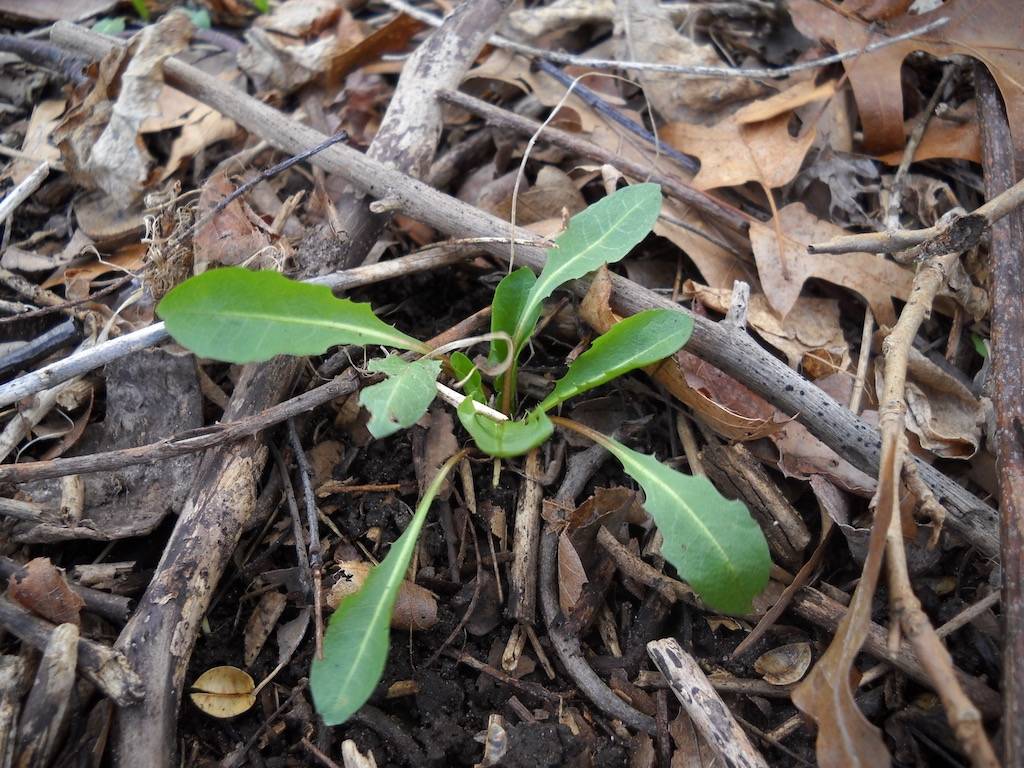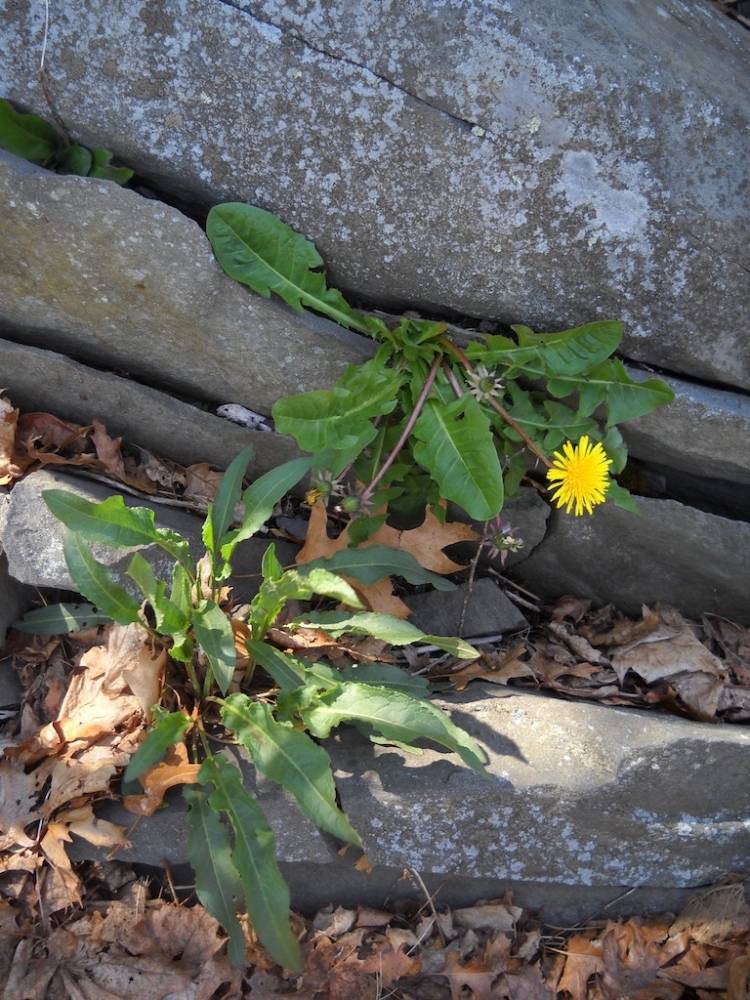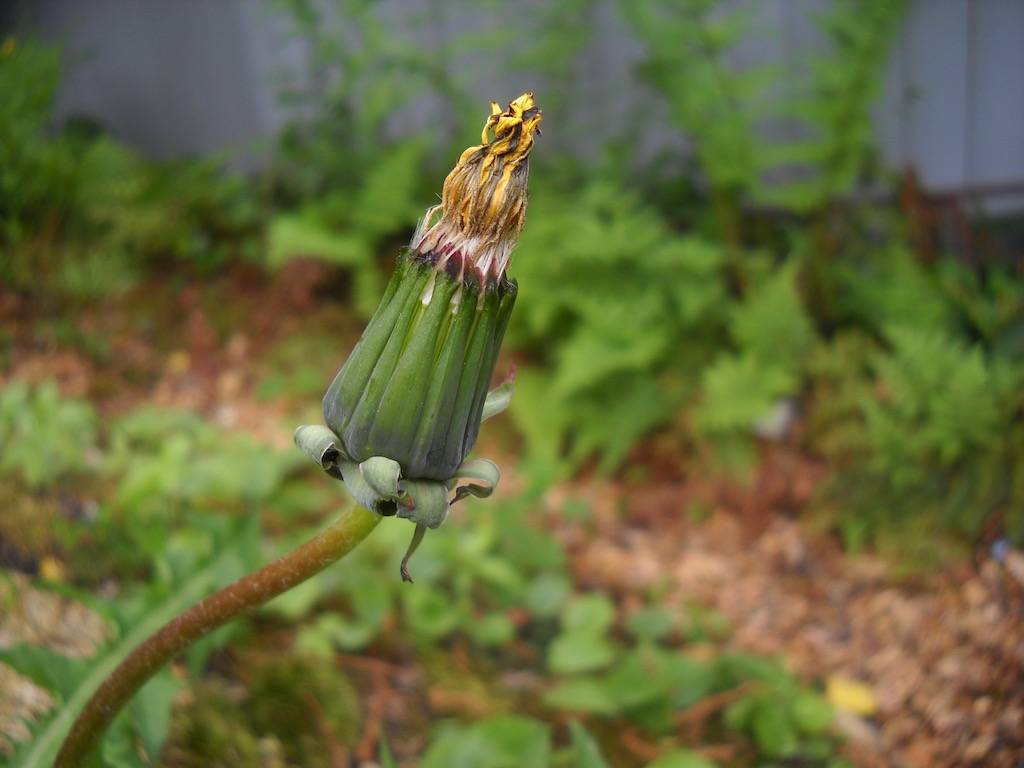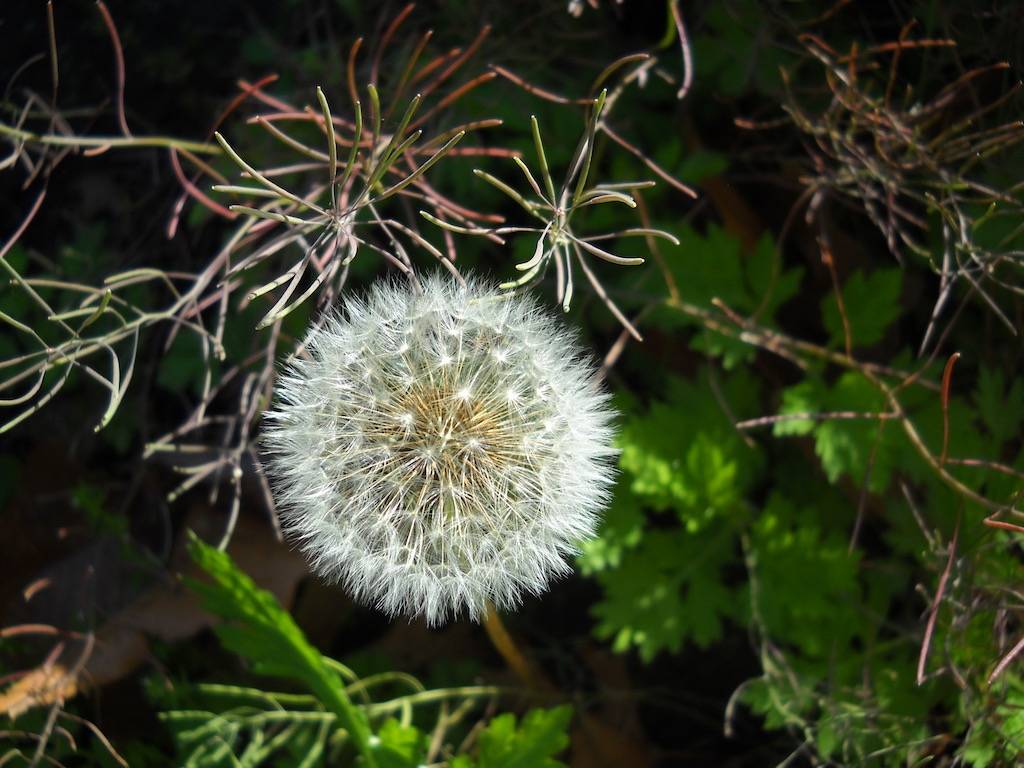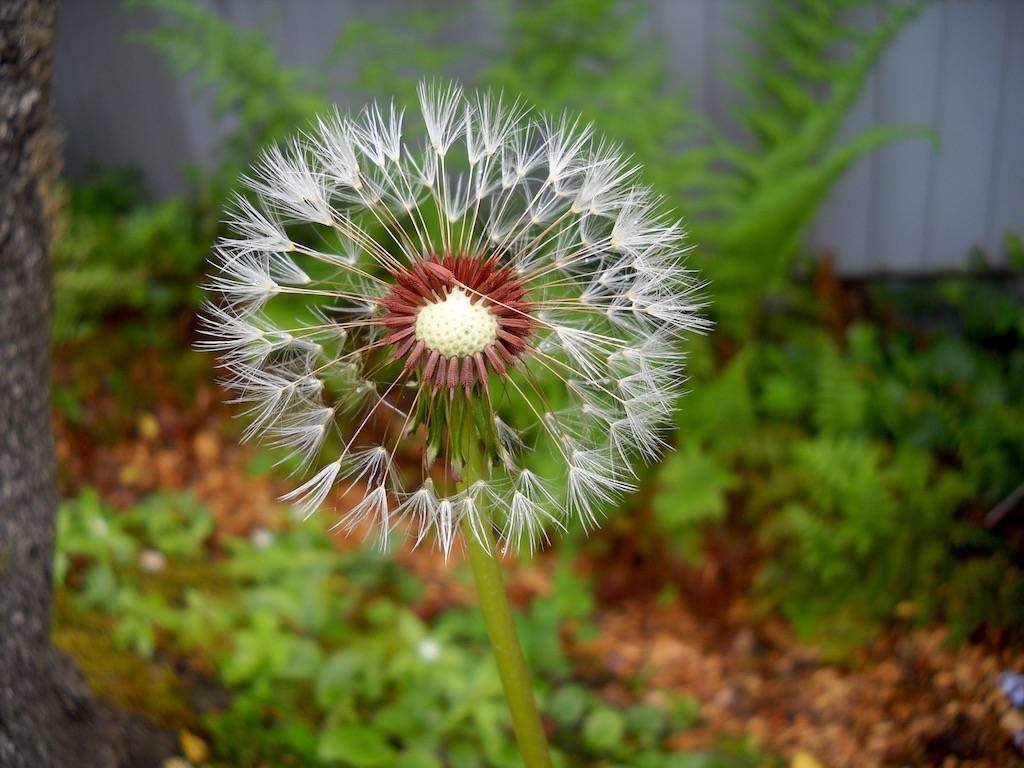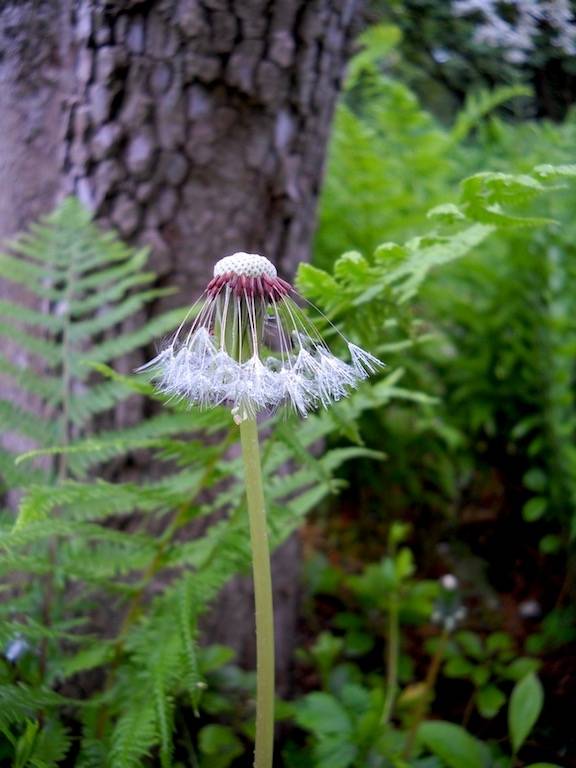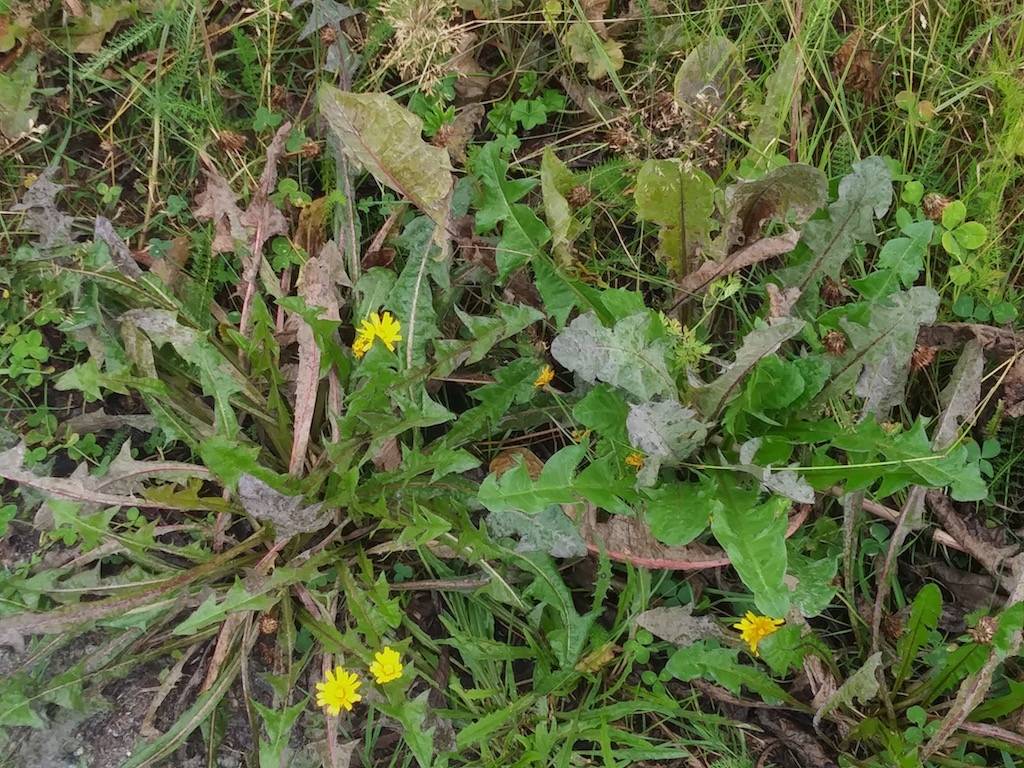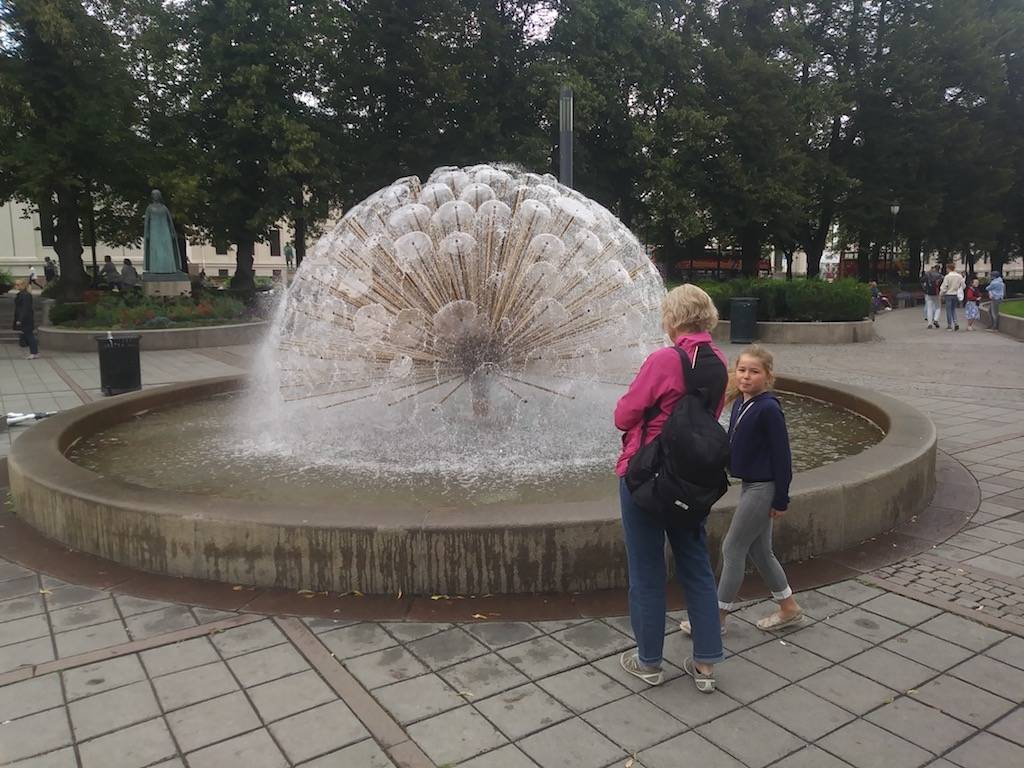common dandelion
This herbaceous perennial is native to Europe and Asia but it is now naturalized throughout temperate regions along roadsides, disturbed banks of waterways, and of course on lawns.
Dandelions growing in the wild look different from the stunted ones growing on your lawn. Wild plants have long narrow serrated leaves. The stem can be more than two feet tall and is topped with a yellow flower head that becomes a fluffy geodesic dome consisting of up to hundreds of seeds, each with a parachute.
A sturdy taproot makes it possible for individuals growing on your lawn to survive repeated mowings. These survivors hug the ground with short leaves and barely a stem but will flower and seed at every opportunity. You will find both forms at Salter Grove. The fully developed ones are found in rock crevices and the condensed versions on the lawns.
Besides medicinal preparations, dandelion leaves are used as greens in salads and soup, flowers are made into wine and the taproot is roasted and brewed into a coffee substitute.

